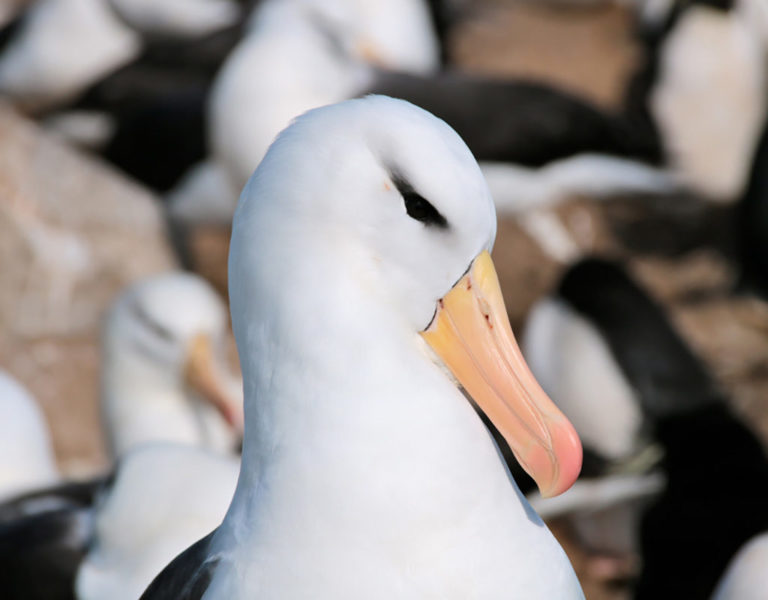
Black-Browed

ALBATROSS
Traditionally known as ‘mollymawks’, the Falklands are the most important site globally for this beautiful seabird, holding 70 % (500,000 pairs) of the world population. The majority of the Falklands’ albatrosses breed on Steeple Jason and Beauchêne Island; however there are 11 other breeding locations.

Black-browed albatross (Thassalarche melanophrys) are migratory, arriving in the Islands to breed in September and leaving by the end of April. Seen offshore throughout the year in Falkland waters, the species ranges widely across the South Atlantic Ocean. Some Falkland birds have been recorded as far away as Angola and the Cape of Good Hope.
They have a pure white head with a black line over and through the eye, the ‘black-brow’. The heavy hooked bill is yellow and pink. The huge wingspan is 210-250cm (7-8ft) with black upperwings and a broad black leading edge to the underwings. The legs and large webbed feet are a flesh-grey colour.
The nest, which is reused every year, is a solid pillar up to 50cm (20ins) high of mud and guano with other materials sometimes incorporated. They frequently nest in association with rockhopper penguins. The single white egg is laid in early October. The eggs were once collected for food in the Islands, but this is now illegal.



Young fledglings are covered in a soft grey down but by April they have grown their adult plumage and are abandoned by their parents. After losing weight for a few days, they leave the nest to fly out to sea on their own. Getting blown astray in bad weather is a real risk.
Young Falkland birds disperse rapidly northwards to southern Brazil not returning to their colony to breed for 7 – 10 years. Albatross are long lived birds, black-browed albatross are known to have survived for more than 50 years, and greater albatrosses (Royal and Wandering) can live for over 60 years.
Black-browed Albatross feed largely in the Falkland Current on fish, lobster-krill and squid. They may travel long distances to find the best feeding – sometimes more than 200 miles in a single trip away from the nest. They are successful scavengers of waste and offal discarded from fishing trawlers.
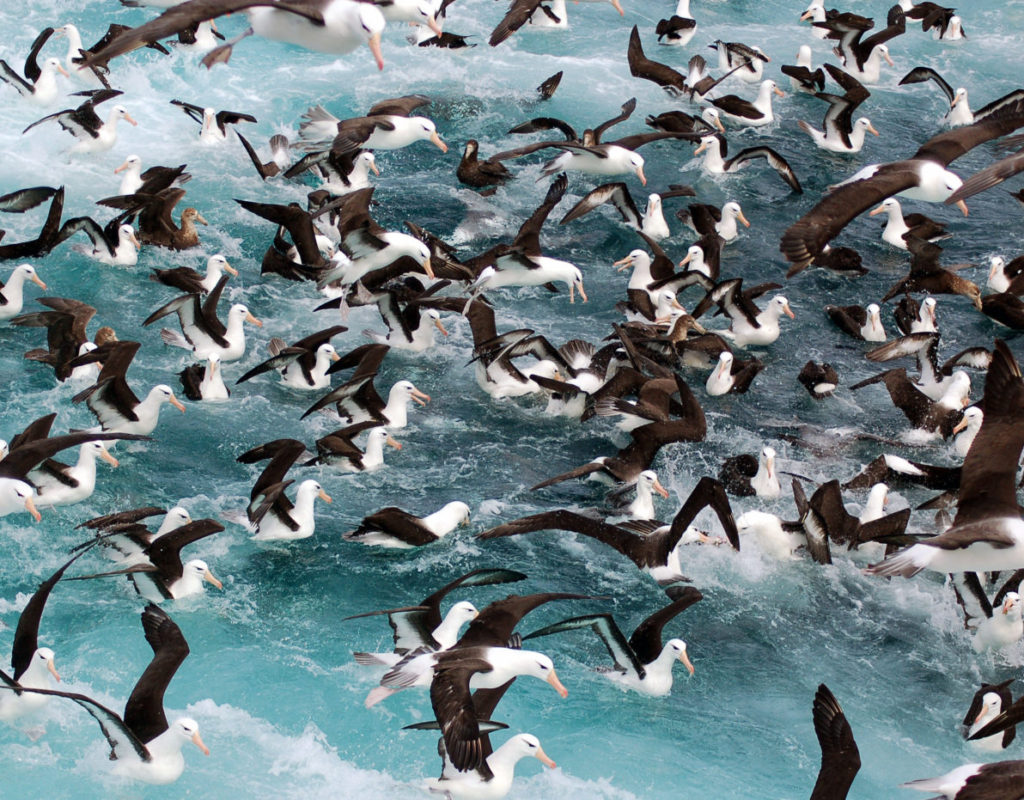
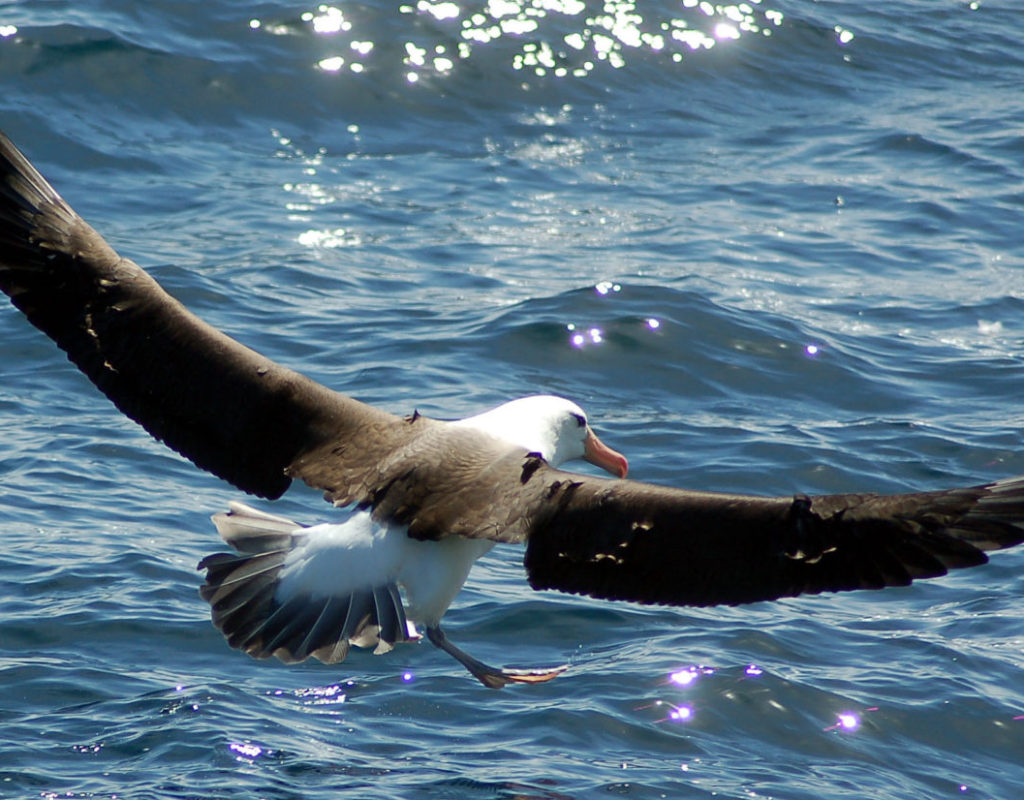
The Black-browed Albatross is a species listed on the Agreement for the Conservation of Albatrosses and Petrels
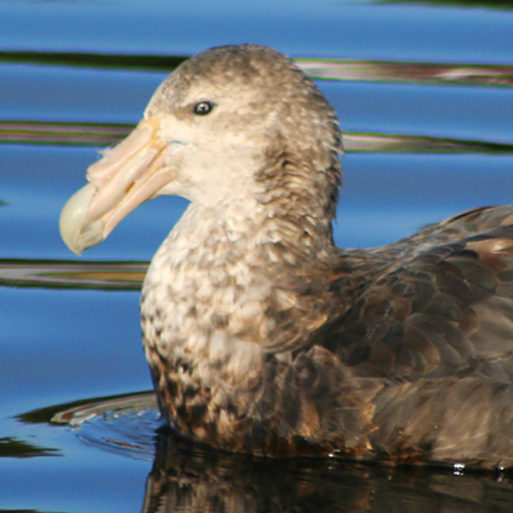
Southern Giant Petrel
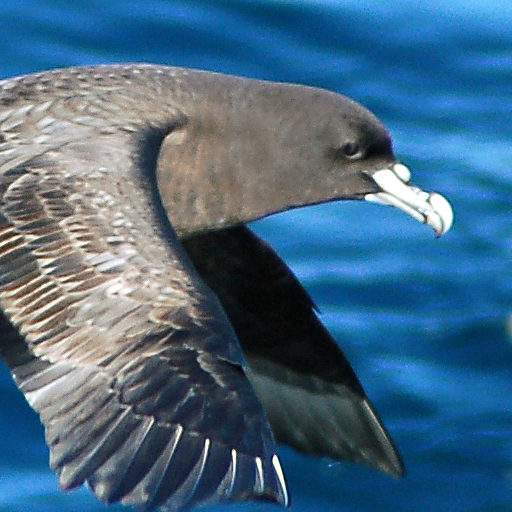
White-chinned Petrel
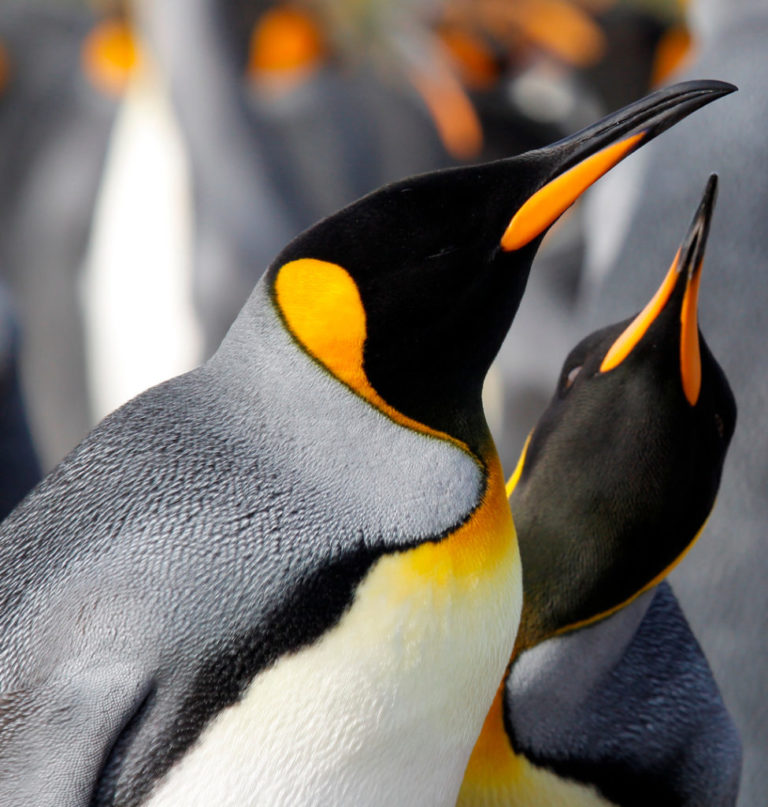
Birds
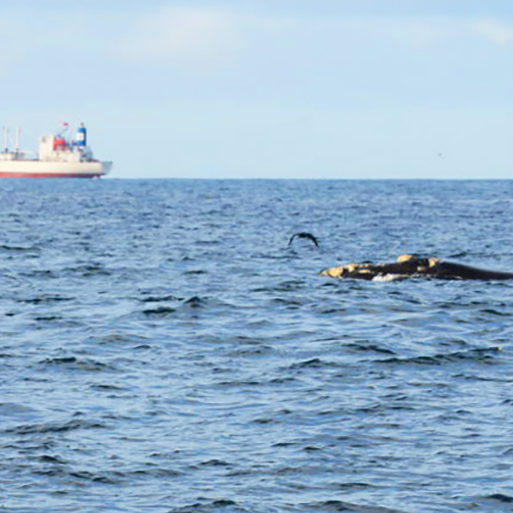
Marine Management




